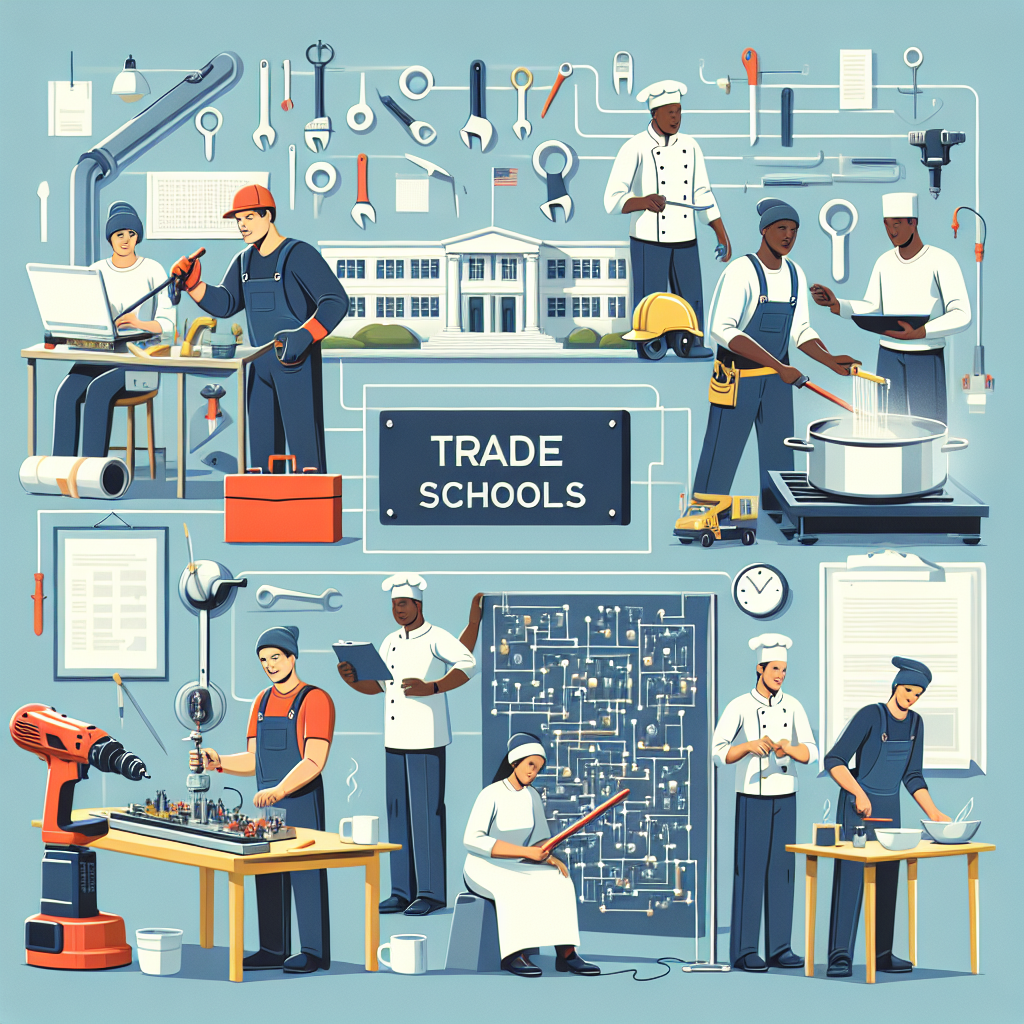Top Insights on What Trade Schools Are There can help you quickly understand the practical schooling options that lead to in-demand technical careers. Whether you’re exploring welding, HVAC, healthcare technician roles, or cosmetology, trade and vocational programs focus on hands-on skill development, shorter time-to-employment, and direct ties to local industries.
Which trade schools are available
Trade schools come in many shapes and sizes. Some are independent vocational institutes focused on a handful of trades, while others are technical colleges or programs embedded within community colleges. There are also apprenticeship providers and industry-run training centers. The right choice depends on the trade you want, the credential you need (certificate, diploma, or license), and whether you prefer employer-sponsored on-the-job training or classroom-based instruction.
Major categories of trade and technical programs
Most trade programs fall into these broad categories. Each category offers career pathways that range from entry-level to advanced technician and supervisory roles.
- Skilled trades: carpentry, plumbing, electrical, welding, HVAC (heating, ventilation, and air conditioning).
- Healthcare allied professions: medical assistant, phlebotomy, dental hygienist, practical nursing (LPN/LVN).
- Information technology and applied technology: network cabling, cybersecurity bootcamps, computer support technician programs.
- Industrial and manufacturing: CNC machining, industrial maintenance, robotics technician.
- Service and creative trades: cosmetology, culinary arts, automotive technology, commercial driving (CDL).
How programs differ: certificates, diplomas, and apprenticeships
Certificate and diploma programs are typically school-based and focus on classroom plus lab work; they often last from a few months to two years. Apprenticeships combine paid on-the-job training with classroom instruction and are especially common in construction and manufacturing trades. Some technical colleges also offer associate degrees that blend general education with technical specialization for students seeking a broader credential.
Choosing a school: practical considerations
When evaluating trade schools, consider these pragmatic factors that influence outcomes and employability:
- Accreditation and state licensing requirements for your chosen trade.
- Program length, schedule flexibility (evening/weekend options), and hands-on lab time.
- Job placement services, employer partnerships, and apprenticeship pipelines.
- Cost, financial aid availability, and Return on Investment (estimated starting wages).
For individuals making a midlife career change or exploring new directions later in life, targeted trade programs can provide an accelerated route to steady work. If you’re interested in resources tailored to career reinvention, see this guide about starting fresh — new career paths for women at 50, which connects life-stage considerations with retraining options.
Where to find reliable data on demand and wages
To make an informed choice, consult labor-market information about employment outlook and median wages for specific trades. The Occupational Outlook Handbook produced by the Bureau of Labor Statistics offers occupation-specific projections and educational requirements that can help you weigh alternatives before enrolling.
Occupational Outlook Handbook at the Bureau of Labor Statistics
Navigating accreditation, certifications, and licenses
Not all trade programs are equal. Accreditation, state board approval (for fields such as cosmetology and HVAC), and recognized certifications (CompTIA for IT, NCCER for construction-related crafts) matter to employers. Confirm that the program prepares you for relevant licensure exams and industry credentials before committing.
Tips for visiting schools and interviewing instructors
Schedule a campus visit, observe lab sessions, and ask instructors about real-world project experience students complete. Talk to current students and alumni about job placement rates and employer relationships. Ask whether the curriculum is updated to match current industry standards and local employer needs.
Short bulleted checklist: quick decision guide
- Identify the trade and required credentials for practice in your state.
- Compare program length and cost against expected entry-level wages.
- Confirm accreditation/licensing prep and hands-on training hours.
- Investigate job placement services and local employer ties.
FAQ
How long do trade school programs typically take?
Programs vary: many certificates take 6–12 months, diplomas and some technical certificates up to 18–24 months, and apprenticeships often range 2–5 years depending on the trade and credential level required.
Can I get financial aid for trade school?
Yes—many accredited trade programs qualify for federal financial aid, state grants, and vocational workforce funds. Community colleges and registered apprenticeship programs may also offer employer sponsorship or tuition reimbursement options.
Will a trade school lead to stable employment?
Trades often align closely with local labor demand and can provide stable, well-paying careers—especially where skilled shortages exist. Checking local job forecasts and talking to employers helps ensure the chosen trade matches market needs.



